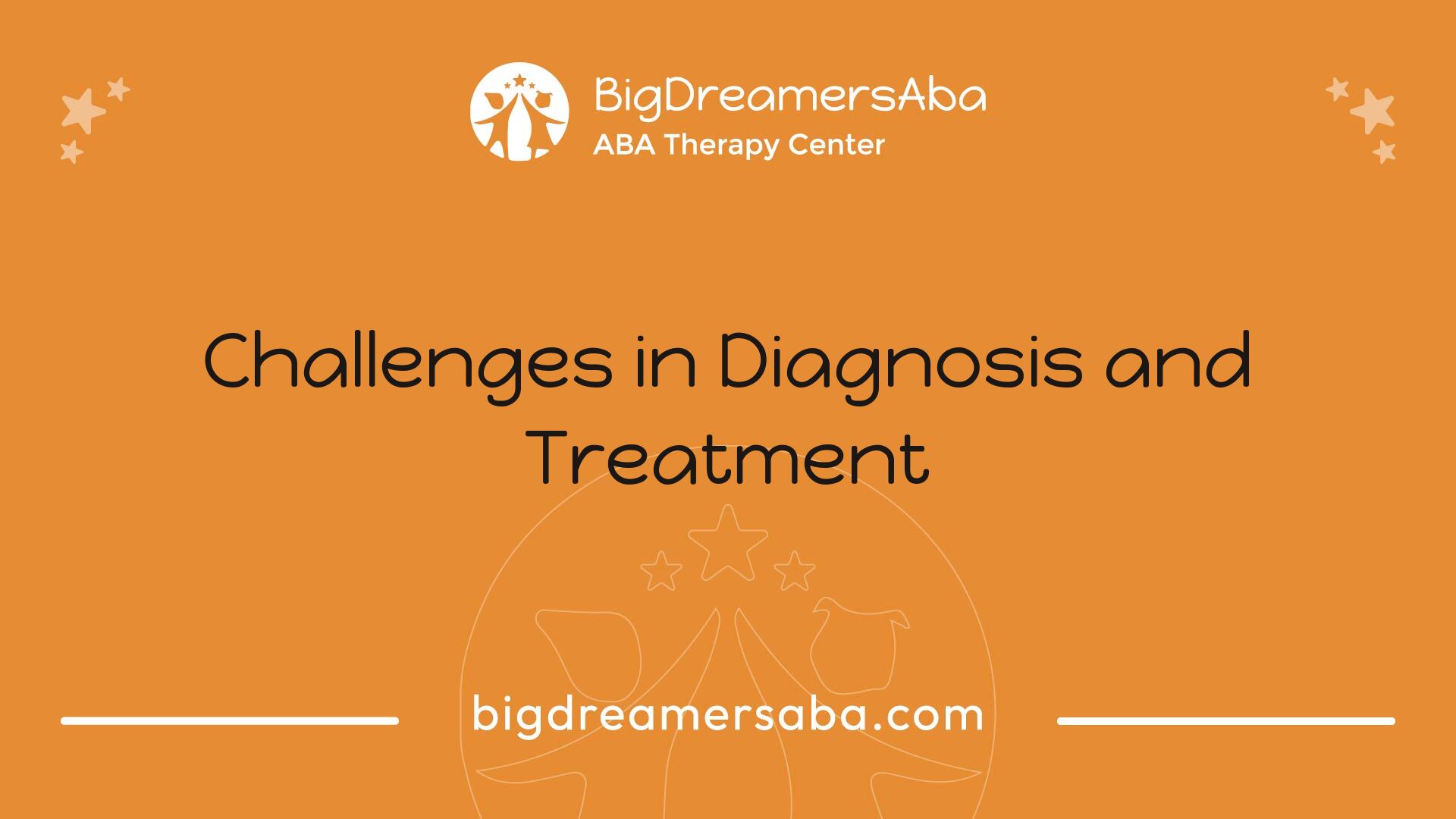Deciphering ADHD and Autism in Harmony
Discover what ADHD and autism look like together, exploring symptoms, challenges, and best practices for care.


Understanding Autism and ADHD
Understanding both Autism Spectrum Disorder (ASD) and Attention Deficit Hyperactivity Disorder (ADHD) is essential in recognizing their unique characteristics and how they can coexist.
Overview of Autism Spectrum Disorder
Autism Spectrum Disorder is a developmental disorder characterized by challenges in social interactions, communication difficulties, and repetitive behaviors. The symptoms can vary widely among individuals, which is why it is considered a "spectrum" disorder. According to the CDC, early signs often appear in early childhood with differences in behavioral, social, and communication skills.
Key features of ASD may include:
CharacteristicDescriptionSocial InteractionDifficulty in engaging with others, interpreting social cues, and forming relationships.Communication SkillsChallenges in verbal and non-verbal communication, including delayed speech development.Repetitive BehaviorsEngaging in repetitive movements or speech, and a strong preference for routines.
Overview of Attention Deficit Hyperactivity Disorder
Attention Deficit Hyperactivity Disorder is a mental health disorder marked by ongoing patterns of inattention, hyperactivity, and impulsivity. Individuals with ADHD may struggle to focus and complete tasks, leading to challenges in academic and social settings. The CDC outlines that these symptoms can manifest differently, depending on the individual.
Common symptoms of ADHD include:
CharacteristicDescriptionInattentionDifficulty sustaining attention in tasks, making careless mistakes, and being easily distracted.HyperactivityExcessive movement and difficulty remaining seated, often seeming restless.ImpulsivityActing without thinking, interrupting others, and an inability to wait for one's turn.
Recognizing the distinct features of ASD and ADHD is crucial in understanding the complexities of these neurodevelopmental disorders. Identifying how both conditions overlap can help in exploring what does ADHD and autism look like together. For more information on autism signs and symptoms, refer to our article on signs your toddler is not autistic.
Understanding these disorders can aid in developing effective strategies for support and intervention, enhancing the quality of life for those affected.

Symptoms of Autism and ADHD
Understanding the symptoms of both Autism Spectrum Disorder (ASD) and Attention Deficit Hyperactivity Disorder (ADHD) is essential, particularly when they co-occur. This section explores the social interactions and communications, as well as the behavioral patterns and interests commonly associated with both conditions.
Social Interactions and Communications
Individuals with both ADHD and autism often experience significant difficulties in social interaction and communication skills. This can manifest as challenges in understanding social cues, maintaining conversations, and forming relationships. Many find it hard to interpret body language or facial expressions, which can hinder their ability to connect with others socially [1].
The overlap in symptoms can lead to complications in diagnosis and treatment. For instance, those with AuDHD may have a higher difficulty rate in social settings compared to individuals with only one of the conditions, impacting their overall social functioning [2].
Social Interaction SkillsDifficulty Level in Individuals with AuDHDUnderstanding social cuesHighMaintaining conversationsHighForming relationshipsModerate to High
Behavioral Patterns and Interests
Behavioral patterns and interests in individuals with ADHD and autism can present distinct characteristics. Autism often involves restricted or repetitive behaviors, alongside fixated interests in specific topics. For example, an individual may engage in hand-flapping or lining up objects, displaying a preference for routine and familiarity.
In contrast, ADHD is characterized by impulsivity, hyperactivity, and inattention, which can manifest as a tendency to shift focus rapidly from one activity to another. While some symptoms can overlap, the core behaviors often differ. For example, individuals with ADHD might frequently interrupt others during discussions, which can further complicate interactions with autistic individuals who may prefer structured communication.
Behavioral PatternsPresence in AutismPresence in ADHDRepetitive behaviors (e.g., hand-flapping)YesNoFixated interestsYesOccasionallyImpulsivityNoYesHyperactivityNoYes
The co-occurrence of ADHD symptoms in individuals with autism ranges from 53% to 78% in children, lower in community samples at 28–31%. Understanding these symptoms can aid in identifying effective treatment options and improving outcomes for those affected.
For more information on the implications of untreated autism, visit our article on what happens if autism is not treated?. Additionally, exploring the nuances of autism can be beneficial; consider our insights on how do autistic people see the world?.

Comorbidity of Autism and ADHD
Prevalence Rates in Individuals
The co-occurrence of Attention Deficit Hyperactivity Disorder (ADHD) and Autism Spectrum Disorder (ASD) is not uncommon. Research indicates that around 50% to 70% of individuals with Autism Spectrum Disorder also exhibit symptoms of ADHD [2]. This percentage is significantly higher than the general population, where approximately 10% are diagnosed with ADHD.
Conversely, about 20% to 50% of individuals diagnosed with ADHD display some characteristics of autism, showcasing a notable overlap between these two conditions. The following table summarizes the prevalence of ADHD and autism in the general population versus those with the comorbid condition known as AuDHD.
ConditionGeneral Population (%)Individuals with ADHD (%)Individuals with Autism (%)ADHD1050 - 70-Autism2 - 320 - 50-
Impact on Social Functioning
The combination of autism and ADHD can significantly affect an individual's social skills and functioning. Individuals with AuDHD often face considerable challenges related to social interactions and communication abilities. Key symptoms common to autism, such as difficulties understanding social cues and maintaining conversations, can be exacerbated by the impulsivity and inattention associated with ADHD [1].
This struggle can hinder the formation of relationships and effective communication with peers and family members. Outcomes for individuals with combined conditions tend to be poorer than those with either condition alone. Accessing appropriate care from clinicians knowledgeable about both autism and ADHD is crucial for improving these individuals' social functioning and overall well-being. Through specialized support, individuals can learn strategies to enhance their social interactions and cope with the challenges of living with both disorders.
Understanding the prevalence and impact of these comorbid conditions is essential for parents and caregivers as they navigate the complexities of diagnosis and treatment. For additional insights on navigating the complexities of autism, consider reading about is it worth getting an autism diagnosis? or what happens if autism is not treated?.

Challenges in Diagnosis and Treatment
Navigating the complexities of ADHD and autism can present significant challenges when it comes to diagnosis and treatment. The overlapping symptoms and social stigma surrounding these neurodivergent disorders often complicate the process for individuals and families seeking help.
Overlapping Symptoms and Conditions
The overlap in symptoms between Autism Spectrum Disorder (ASD) and Attention Deficit Hyperactivity Disorder (ADHD) can lead to misunderstandings in diagnosis. For example, both conditions might exhibit issues with attention, impulsivity, and social interactions. This commonality makes it crucial for healthcare providers to conduct thorough assessments to differentiate between the two and identify the presence of both disorders, a comorbidity known as AuDHD. Research indicates that around 50% to 70% of individuals with ASD also meet the criteria for ADHD, reflecting the high prevalence of this dual diagnosis [2].
Individuals with AuDHD tend to show poorer outcomes compared to those with only one of the disorders. This highlights the importance of accessing specialized care from clinicians who understand both conditions, as tailored treatment strategies are essential for effective management.
ConditionPrevalence RateADHD alone5-10%ASD alone1-2%AuDHD (both ADHD and ASD)50% - 70%
Stigma Surrounding Neurodivergent Disorders
Stigma plays a significant role in the challenges faced by people navigating both ADHD and autism. Many individuals encounter frustration and obstacles in daily life due to societal misconceptions. These misunderstandings often stem from beliefs that link ADHD to poor parenting or personal failings, while individuals with autism frequently face stereotyping due to their behaviors.
The stigma surrounding these conditions can deter individuals from seeking a diagnosis and receiving treatment. In many cases, healthcare professionals may not be adequately equipped to handle dual diagnoses, which have only gained recognition in the medical community in recent years. This lack of understanding can further complicate the path to appropriate care.
Accessing effective treatment becomes even more challenging when stigma leads individuals to avoid seeking help. Families may find it beneficial to research resources and support networks that focus on both ADHD and autism care to navigate these hurdles effectively. For information on when to consider a diagnosis, individuals can explore the article on is it worth getting an autism diagnosis?.

Best Practices for Care
Understanding the nuances of Autism Spectrum Disorder (ASD) and Attention Deficit Hyperactivity Disorder (ADHD) requires a comprehensive approach to care. This includes focusing on early intervention and accessing specialized healthcare.
Importance of Early Intervention
Early intervention is a crucial element of care for individuals displaying signs of both ADHD and autism. Research indicates that beginning treatment as early as possible can significantly improve developmental outcomes. Behavioral therapies, tailored specifically for the needs of individuals with both conditions, can facilitate improvements in social skills, communication, and academic performance.
A key factor in successful early intervention is recognizing the overlapping symptoms of ADHD and autism. Accurate diagnosis can often be delayed due to these shared characteristics Focus Bear, which makes it essential for caregivers and educators to be vigilant in identifying signs early on.
Benefits of Early Intervention
Age of InterventionPotential OutcomesBefore age 3Enhanced language skills, improved social engagementAges 3-5Better coping strategies, reduced behavioral issuesAges 6+Increased academic achievement, improved self-esteem
Accessing Specialized Healthcare
Accessing specialized healthcare can pose challenges for individuals with a dual diagnosis of ADHD and autism. Stigma can hinder individuals from seeking necessary diagnostic services DoneFirst. This stigma may also affect how healthcare professionals approach treatment, as the conditions have only been recognized together in the medical community since 2013. Not all practitioners are equipped to manage such cases effectively, which can complicate care.
Individuals seeking help should consider consulting healthcare providers with specific experience in neurodivergent conditions. Specialized support can help navigate the complexities of treatment and provide resources needed for both conditions. Additionally, raising awareness about the co-occurrence of ADHD and autism can lead to more understanding and appropriate care.
For more insight into the symptoms that may indicate the need for evaluation, consider exploring signs your toddler is not autistic and is it worth getting an autism diagnosis?. Recognizing the signs early and around their specific ages can significantly change life trajectories for affected individuals.
Genetic and Biological Links
Understanding the genetic and biological connections between autism and Attention Deficit Hyperactivity Disorder (ADHD) can shed light on the complexities of these neurodevelopmental disorders. Recent findings highlight that individuals with these conditions often share common genetic risk factors.
Shared Genetic Risk Factors
Research indicates that autism spectrum disorder (ASD) and ADHD may have overlapping genetic influences. Studies have identified common genetic variants associated with both conditions, suggesting that similar biological pathways might be involved in their development. For instance, a genome-wide case-control study found that genetic copy number variants (CNVs) present risks for both ADHD and ASD.
In fact, approximately two-thirds of children diagnosed with ADHD also have at least one additional comorbid condition, often including autism. This strong correlation reinforces the notion that genetic components are significantly interlinked. As researchers continue to explore these shared risk factors, it may improve diagnostic tools and treatment options for individuals navigating both conditions.
Genetic FactorsDescriptionCommon Genetic VariantsShared genetic variants may contribute to the development of both ADHD and ASDGenetic Copy Number Variants (CNVs)CNVs are linked to increased risks for both ADHD and ASDComorbid ConditionsMany individuals with ADHD are likely to have autism as a co-occurring condition
Treatment Implications and Considerations
The recognition of shared genetic and biological underpinnings between ADHD and ASD carries important implications for treatment strategies. Understanding that these disorders may share common pathways can inform tailored interventions that address both conditions collaboratively.
As individuals are often affected by unique combinations of symptoms, a holistic approach involving behavioral therapies, educational support, and, when appropriate, medication may be necessary. For instance, youth with ADHD may be at a higher risk for substance use, such as early cigarette use, which could require early intervention to prevent further complications [5].
Additionally, comprehending the genetic components of these disorders can enhance preventative measures and early diagnoses, which are crucial for effective treatment outcomes. Awareness of these connections supports families in making informed decisions regarding therapies and support systems. For more insights, explore topics such as is it worth getting an autism diagnosis? and what happens if autism is not treated?. Understanding the interplay between ADHD and autism not only empowers individuals but also aids professionals in providing critical support and resources.
References
[2]:
[3]:
[4]:
[5]:
Recent articles

ABA Techniques for Picky Eaters: Building Better Habits

How Social School Support Makes School Transitions Easier for Children
